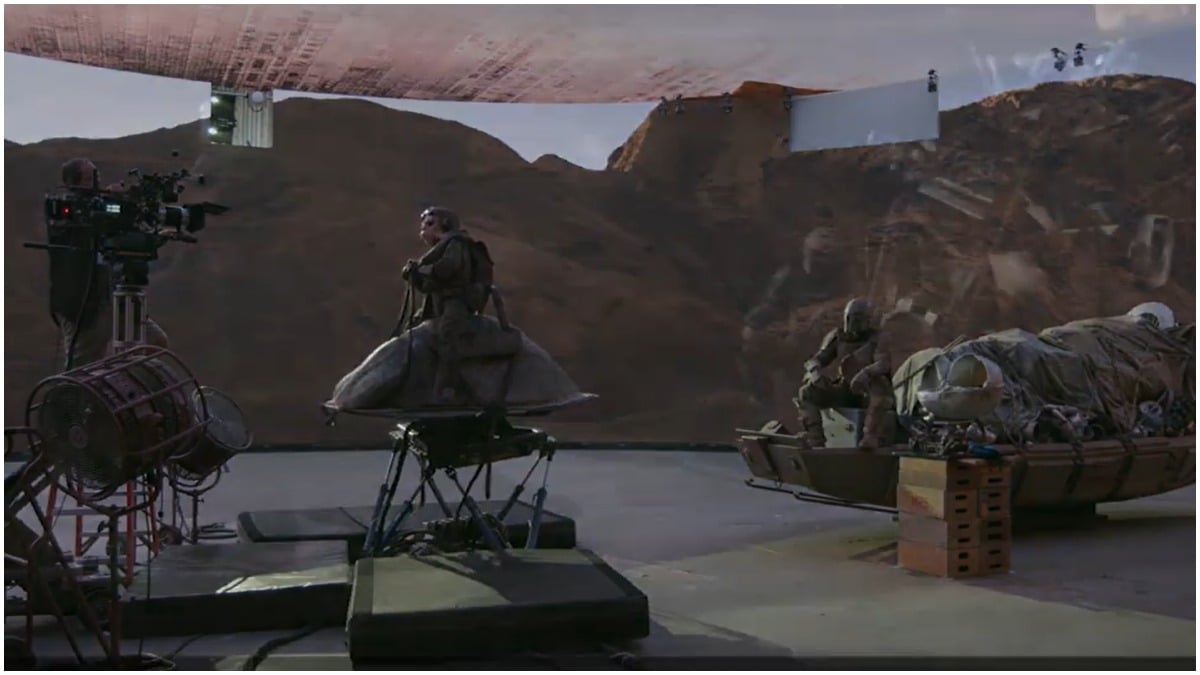
I’ll admit it: When I dove into the fourth episode of Disney Gallery: The Mandalorian, I was hoping on a shot-for-shot creation tutorial for every single Baby Yoda microexpression.
Nope, it’s half an hour of computers. But it’s an interesting half hour.
The Mandalorian: Special effects
One of the most treasured aspects of Disney Plus’ The Mandalorian is its balanced use of CGI. It’s there, and you know it’s there, but it largely does not intrude on the storytelling experience.
Plot and character do the heavy lifting rather than software. It’s the inverse of the prequels.
Creator Jon Favreau shows a solid understanding of this.
“If you shoot it right, CGI will look better,” he points out in a discussion about what technology can do and what it can’t.
It cannot, for example, fully replicate natural light. This jibes with what J.J. Abrams had to say about shooting Rise of Skywalker in Jordan despite having the entire Lucasfilm toybox at his disposal.
For all the sins of the sequels, they do look fantastic.
Favreau explained that he leaned on his experience shooting the live-action versions of Lion King and Jungle Book. Both movies were heavy on SFX, to the point where Lion King was practically shot in virtual reality.
This translated to the use of a video wall for The Mandalorian. Most scenes were shot indoors against a 75-foot diameter circle with an LED screen ceiling.
It’s not a green screen, but a video screen. The difference is significant.
Shooting The Mandalorian with a video screen
Photographs of locations were projected on the wall with bits of physical set, and content was motion-tracked on the camera so that the landscape moved with it. It can replicate a sunrise and sunset minute for minute.
The effect was so realistic that for complex shots, such as scenes taking place against Mando’s ship, the SFX crew was able to use half physical ship, half wall projection.
The visual line between the two is difficult to discern. Blending physical with digital has come a long way from the cartoon show of Episode II.
The effect is similar to a first-person Star Wars video game. Since turning the camera happens in real-time, director Rick Famuyiwa says the technology allows him more freedom.
“I felt like I was free to sort of really create,” he says. Director and executive producer Dave Filoni adds that the SFX reminds him of his experience in animation.
The technique means that the set can be changed to an entirely new location within 30 minutes.
The actors relished the immersive experience as well. Carl Weathers, who plays Greef Carga, referred to it “as liberating as anything I’ve ever worked on… once you accept it…”
Weathers noted that the lava river scene in the finale of Episode 8, which featured four different actors, was a vast improvement over green screen acting because all of their visions were aligned.
“I just didn’t want to fall overboard in lava,” he said of the experience of feeling as if he were actually in the environment.
It’s a quieter episode without the philosophical fireworks of earlier installments, but Episode 4 provides a valuable look at how wise use of technology contributed to the success of The Mandalorian.
The Mandalorian is currently streaming on Disney Plus.